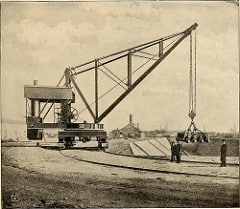
SOR 504 Eradication of MTBF
Abstract
Fred discussing just how bad MTBF and related measures are for our profession.
ᐅ Play Episode
Your Reliability Engineering Professional Development Site
by Fred Schenkelberg Leave a Comment

Fred discussing just how bad MTBF and related measures are for our profession.
ᐅ Play Episode
by Fred Schenkelberg Leave a Comment

MTBF stands for ‘mean time between failure.’ This sounds intuitively easy to understand. But … if you haven’t taken the time to understand MTBF, and your organization relies on the reliability of its products, you are almost certainly in trouble.
[Read more…]by Robert Kalwarowsky Leave a Comment

This week, I welcome Fred Schenkelberg back to the show to talk about mean time between failures and the basics of reliability math. Long story short, I hope you’re not using MTBF as a proxy for reliability!
If you haven’t yet, check out my website robsreliability.comand sign up for the weekly reliability newsletter with bonus exclusive content.
If you like the show, please tell your colleagues about it and follow Rob’s Reliability Project on LinkedIn and YouTube.
Finally, if there are any topics, guests you’d like to hear from, questions you want answered, or if you’d like to appear on the podcast, email me at robsreliabilityproject@gmail.com
If you haven’t signed up for my weekly reliability newsletter with extra exclusive content, go to http://robsreliability.com/email-list/ and sign up!
Follow Fred Schenkelberg on LinkedIn – https://www.linkedin.com/in/fmsreliability/
Check out accendoreliability.com
Check out Rob’s Reliability – www.robsreliability.com
Follow Rob’s Reliability Project on LinkedIn – https://www.linkedin.com/company/robsreliabilityproject/
Follow Rob’s Reliability Project on Facebook – https://www.facebook.com/robsreliabilityproject/
by Christopher Jackson 2 Comments

MTBF stands for ‘mean time between failure.’ This sounds intuitively easy to understand. But … if you haven’t taken the time to understand MTBF, and your organization relies on the reliability of its products, you are almost certainly in trouble. [Read more…]
by Christopher Jackson 2 Comments

Chris and Fred discuss what happens when you can’t avoid having the MTBF imposed upon you – even if it is your own organization and not the customer. Perhaps you are told that ‘our competitors quote the MTBF … so we have to as well!’ But you can (sneakily) tailor test data to get whatever MTBF you want. You can make life easy on yourself by not challenging this paradigm (noting that you will most likely get an unhappy customer). But it is almost impossible to apportion MTBF goals to individual designers that even allow the motivated ones to create a reliable system. So what do you do? Listen to this podcast to help you on your reliability journey.
ᐅ Play Episode
by Carl S. Carlson Leave a Comment

Carl and Fred discussing the pitfalls of using Mean Time Between Failures (MTBF) as a metric for identifying reliability requirements.
ᐅ Play Episode
by Christopher Jackson 3 Comments

Chris and Fred discuss how management teams across many institutions continue to misuse the MTBF while believing they are fluent in the field of reliability (when they clearly aren’t)!
ᐅ Play Episode

Adam and Chris Stapelmann discussing metrics for reliability software.
ᐅ Play Episode

 A Series of Unfortunate MTBF Assumptions
A Series of Unfortunate MTBF AssumptionsThe calculation of MTBF results in a larger number if we make a series of MTBF assumptions. We just need more time in the operating hours and fewer failures in the count of failures.
While we really want to understand the reliability performance of field units, we often make a series of small assumptions that impact the accuracy of MTBF estimates.
Here are just a few of these MTBF assumptions that I’ve seen and in some cases nearly all of them with one team. Reliability data has useful information is we gather and treat it well. [Read more…]
by Andre Kleyner Leave a Comment

Andre and Fred discussing why we do not like using MTBF.
ᐅ Play Episode
by Adam Bahret Leave a Comment

Mean Time Between Failure (MTBF) is one of the most well know reliability metrics. 
But to anyone who works with reliability, it seems like it was developed by some evil anti-reliability mastermind to undermine the possibility of connecting reliability to anything or anyone.
Mean Time Between Failure means what?
This is the process of understanding everyone goes through as they are introduced to MTBF, formally or informally. [Read more…]
by Fred Schenkelberg 1 Comment

You have carefully crafted a detailed reliability goal including function, environment, probability, and duration, plus apportioned it to critical supplied subsystems and components. Your vendor decides to use MTBF instead.
What can you do? What should you do?
by Fred Schenkelberg Leave a Comment

You have carefully crafted a detailed reliability goal including function, environment, probability, and duration, plus apportioned it to critical supplied subsystems and components. Your vendor decides to use MTBF instead.
What can you do? What should you do?
Mean Time Between Failure or MTBF is almost universally recognized in maintenance, reliability, and asset management.
Why is that? And does it actually help an organization improve the reliability of their assets?
The answer is a resounding No.
ᐅ Play Episode
by Fred Schenkelberg 4 Comments
Please log in to view this content
 Ask a question or send along a comment.
Please login to view and use the contact form.
Ask a question or send along a comment.
Please login to view and use the contact form.